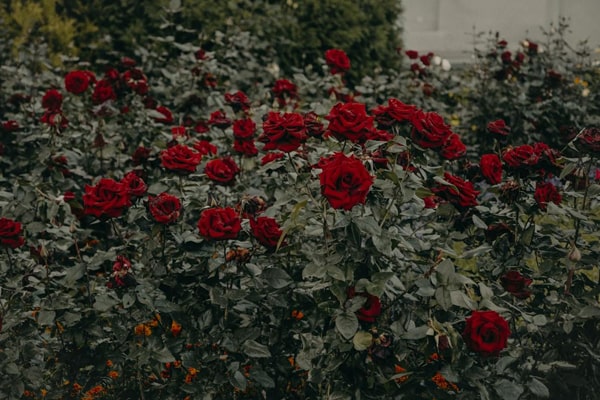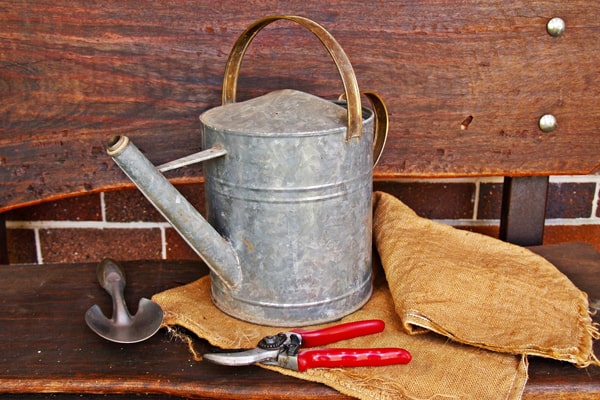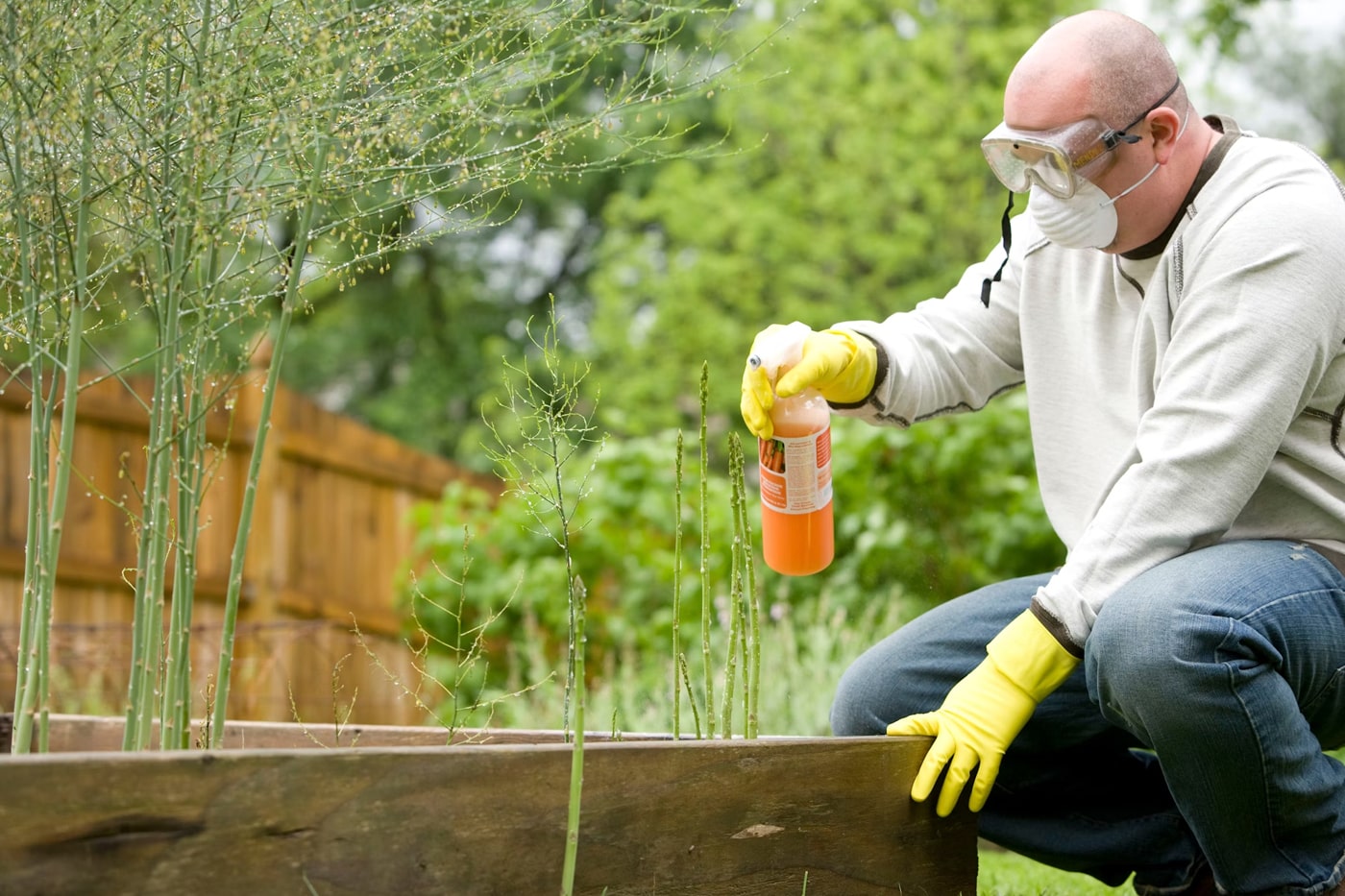Spring has sprung, and that means it’s allergy season.
In spring, allergies are common because plants release pollen into the air as part of their reproductive process. These minuscule particles can trigger allergic reactions in some people.
Spring is a particularly challenging time for allergy sufferers due to the increased pollen activity.
Trees, grasses, and flowers typically bloom during this season, unleashing a burst of pollen into the environment. Wind carries these particles over long distances, making it difficult to escape their reach.
As gardeners eagerly cultivate their plants, they come into direct contact with these airborne allergens. This triggers an allergic reaction and symptoms like sneezing, runny nose, and itchy eyes.
Also, the warm and breezy weather encourages people to spend more time outdoors, exposing them to higher concentrations of pollen.
Gardening is a fun, rewarding activity, but it can inadvertently expose individuals to a higher risk of allergic reactions during the spring months. How do you alleviate allergy symptoms while working in the garden or enjoying your outdoor space? Try these tips:
Contents []
What to Do When Seasonal Allergies Attack
If pollen allergies strike while you’re in the garden, there are simple ways to find relief.
Start by taking a break and move indoors to reduce your exposure. Wash your face and hands to remove any pollen that might have settled on your skin. Consider changing your clothes, as pollen can cling to fabric.
If your eyes are itchy, use a cool compress to soothe them. Over-the-counter antihistamines can help alleviate symptoms, but it’s essential to follow the recommended dosage.
Drink plenty of water to stay hydrated, as this can help flush out allergens from your system. If nasal congestion is bothering you, a saline nasal spray can provide relief by moisturizing your nasal passages.
Resting and allowing your body time to recover is crucial. Remember, it’s okay to take a break and continue gardening when your allergy symptoms subside. Listening to your body and taking these simple steps can help you manage pollen allergies and continue enjoying your time in the garden.
How to Minimize the Risk of Seasonal Allergies While Gardening
If you love gardening but struggle with seasonal allergies, there are simple steps you can take to manage your symptoms and still enjoy your time outdoors.
Grow Low-Pollen Plants

Choose plants that produce less pollen to minimize your exposure to allergens. Opt for flowers and shrubs that rely on insects for pollination rather than those that release a lot of airborne pollen. Examples of low-pollen plants include:
Roses: Roses are not only beautiful but also low in pollen. With their vibrant colors and pleasing fragrances, they can enhance your garden without triggering allergic reactions. Selecting hybrid varieties, such as tea roses, can further reduce pollen levels.
Daffodils: Daffodils bring a cheerful burst of yellow to the garden and are considered low-pollen flowers. These spring-blooming plants are a great choice for adding color without contributing to allergy woes. Be sure to plant them zin well-drained soil for optimal growth.
Snapdragons: Snapdragons are not only visually appealing with their unique snap-like flowers, but they are also low-pollen plants. Their tubular blooms make them a favorite among gardeners looking to minimize exposure to airborne allergens.
Tulips: Tulips are another allergy-friendly option, adding elegance to the garden without releasing excessive pollen. Available in a variety of colors, tulips are a low-maintenance choice for allergy-conscious gardeners.
Zinnias: Zinnias are not only colorful and attractive but also low in pollen. These summer-blooming flowers are known for their resilience and ability to thrive in various soil conditions, making them a versatile and allergy-friendly addition to the garden.
Begonias: Begonias, with their vibrant and varied foliage, are low-pollen plants that can bring a touch of elegance to shady areas of the garden. They thrive in containers, hanging baskets, or garden beds, providing options for different gardening preferences.
By choosing plants with minimal airborne pollen, you can enjoy the pleasures of gardening without the worry of triggering allergic reactions.
Wear Protective Gear

When heading out to the garden, consider wearing protective gear to shield yourself from allergens. These protective gear include:
Face mask: A simple mask can help filter out pollen particles, reducing the likelihood of inhaling them.
Gloves: Wearing gloves and long sleeves can protect your skin from coming into direct contact with allergens.
Protective glasses: If you wear glasses, donning sunglasses can help shield your eyes from airborne pollen particles. You can also wear protective eye gear to shield the eyes from pollen.
Hat: Consider wearing a wide-brimmed hat to cover your head and keep pollen from settling in your hair.
Hair tie/headband: For growers with long hair, pollen could cling to hair strands and trigger a reaction. Keep your hair neat by tying your tresses with a hair tie or using a headband to hold your bangs back and avoid contact with pollen.
Long-sleeve shirts: Long-sleeved shirts and pants provide an extra layer of protection, preventing direct contact between your skin and allergens.
These measures act as a barrier, allowing you to enjoy your gardening activities while minimizing exposure to potential triggers.
Reduce Exposure to Allergens
Take steps to minimize your overall exposure to allergens in the garden. Consider gardening during times when pollen levels are lower, such as in the early morning or late afternoon.
Avoid working in the garden on windy days when pollen is more likely to be airborne and widespread. If possible, delegate tasks that stir up allergens, like mowing the lawn or raking leaves, to others who don’t suffer from allergies.
Gardening at Low-Pollen Periods
Timing matters when it comes to managing allergies while gardening. Plan your gardening activities during periods when pollen levels are naturally lower.
Early mornings and late evenings are generally better times for outdoor activities, as pollen counts are typically lower during these times. By aligning your gardening schedule with low-pollen periods, you can still indulge in your hobby while minimizing the risk of allergy symptoms.
Keep Your Tools Clean

Dust off those gardening tools regularly. Pollen can settle or cling on your equipment, becoming an unexpected source of allergens. A quick wipe-down before each use can help keep the pollen at bay and make your gardening experience more enjoyable.
Consider Allergy Medication
Sometimes, even with precautions, allergies may still flare up. Consult with a healthcare professional about over-the-counter or prescription allergy medications. These can provide relief during peak allergy seasons, allowing you to continue enjoying your gardening passion without the constant sniffles. You can take allergy meds before working in the garden to minimize the effects of pollen.
Optimize Your Garden Layout
Strategic planning can make a big difference. Arrange your garden so that high-pollen plants are placed farther away from your favorite sitting or working areas. This simple adjustment can create a more allergy-friendly environment within your green space.
Delegate Allergy-Triggering Tasks
Some gardening tasks kick up more allergies than others. If possible, let someone else handle tasks like mowing the lawn or raking leaves. These activities can release a flurry of pollen into the air, and it’s best to minimize your exposure to them if you’re prone to allergies.
Managing seasonal allergies while gardening involves:
- Making thoughtful choices about the plants in your garden.
- Using protective gear.
- Reducing overall allergen exposure.
- Timing your gardening activities to coincide with low-pollen periods.
These straightforward strategies can help you cultivate your garden without letting allergies dampen your enthusiasm.



